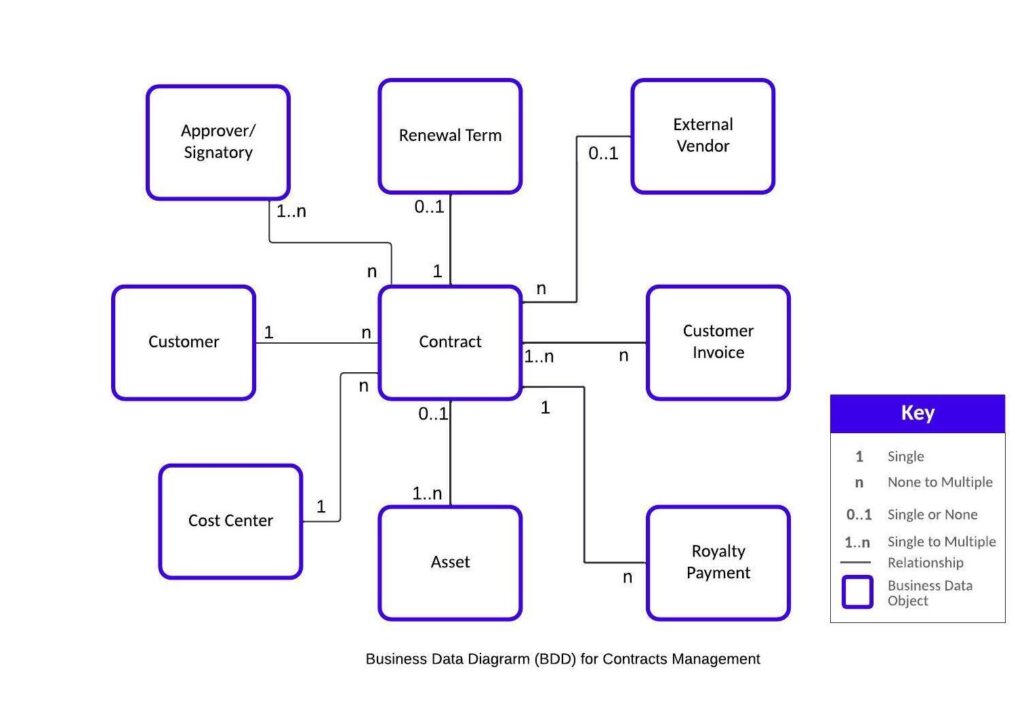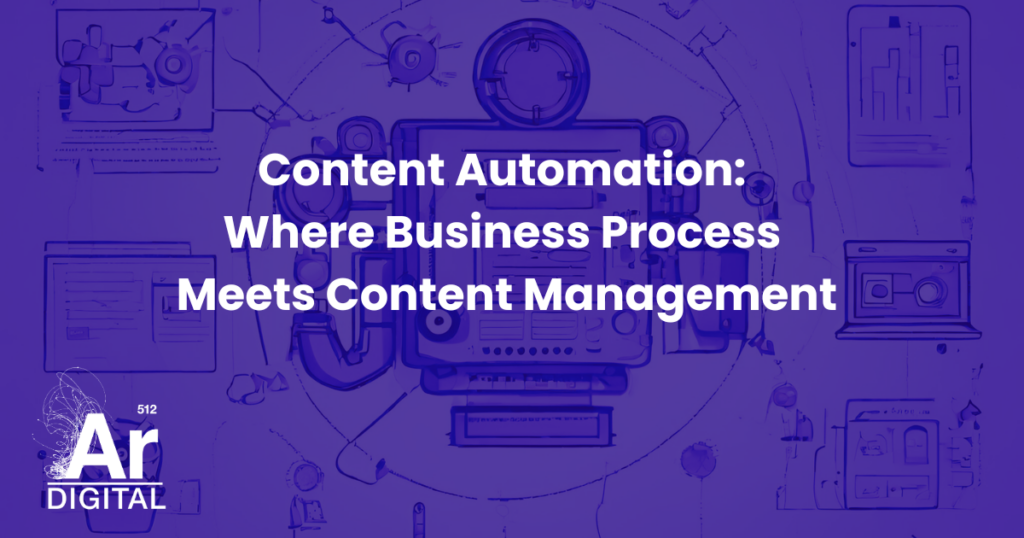The ECM landscape is undergoing a profound transformation. While organizations will always have content that requires management, they do not intend to merely store it in a virtual file cabinet. The emphasis has shifted from storing and retrieving information to using information creatively to enhance profitability and growth. Organizations all care more about how fast information can be gathered, reviewed, updated, and used. And they want to do this while maintaining control of content as it moves through the organization. Rigorous record keeping and creative use of content are no longer mutually exclusive.
The fact that enterprise content needs to be managed is neither new nor groundbreaking. Traditional content management is primarily concerned with organizing and controlling access to digital assets. However, the rise of Business Process Management (BPM) initiatives has expanded the scope of content management far beyond intelligent file storage and access control. Today, the effective management of content is inseparable from the efficient execution of automated workflows. The need to be more efficient, less error-prone, do more with less, and faster requires the intelligent automation of processes, and has changed the meaning of content management.
Content Management vs Process Management
When discussing content and process management with stakeholders as part of their overarching enterprise solutions, I’ve observed a distinct dichotomy in perspectives: the data perspective and the process perspective.
Data Thinking:
These stakeholders view content primarily as formatted information. They are concerned with things like security, access, retention, and searchability of the content. Secondary to that, these stakeholders think about the business processes that use the content. Their automation strategies favor records management of content over efficiencies in the business process.
Process Thinking:
These stakeholders see content as artifacts needed in the execution of their critical business processes. They are concerned with things like improving efficiency, de-risking business functions, and eliminating error-prone manual processes. They know they need information in these processes, so they are looking for ways to make that easier to get to. In the context of automation, they are focused on the performance of the business processes over data management, except when it’s specific to the use cases they have targeted for improvement. For example, they care about things like searchability of content in the context of a business process that requires finding content.
Why does it matter what perspective is used, so long as the problem is solved? Viewing the problem from only one perspective limits the solution space that is explored. This narrow view often leads CIOs to select different platforms based on their respective perspectives, opting for something like either an ECM platform for a data perspective or a BPM platform for a process perspective. But, recent advances in the technology landscape have blurred the distinction between data and process management.
The most successful content management strategies recognize that data and processes are interdependent and inseparable. Whether managing structured data or orchestrating complex workflows, the key to efficiency lies in a unified approach that seamlessly integrates content and processes. Whether it’s harnessing data for automated decision-making or optimizing workflows for greater efficiency, the future of content management lies in embracing the convergence of data and process perspectives. And more importantly, it’s embracing the idea that the best solution may not have the ECM or BPM title you expect.
Automating Business Processes on Content
Regardless of their perspective on data or process first, organizations use content to facilitate actions in the business. Our product management teams use a Business Data Diagram (BDD) to help identify all the pieces of information the business cares about and how those information pieces relate to one another (see example below). They then use the BDD to identify essential processes or use cases by considering how data is created, used, consumed, deleted, moved, or copied.
For example, marketing may use data on visits to specific web pages to make advertising budget allocation decisions, while finance might copy a profit and loss statement to generate the quarterly financial report for shareholders. Or, as in the example BDD below, contracts have to be created, contracts are shared with external vendors, and royalties are paid according to terms in the contract. The actions involving content manipulation to achieve specific outcomes are typically referred to as business processes.

Modern organizations are investing heavily in automating these processes. While content management remains fundamental, solutions for basic storage, security, searchability, and retention have become simpler and more cost-effective. Business value is realized when the movement of content through organizations is automated and still controlled to support efficient business processes that increase sales and reduce costs.
iPaaS Platforms Solve Content Automation Problems
Content Automation is the most intriguing aspect of enterprise content management (ECM), where business processes and the data needed for their automation are considered holistically when the solution is developed. Traditionally, many ECM solutions can solve this problem. However, they are often pretty heavy-weight and expensive for many organizations. Modern enterprise solutions to this type of automation seamlessly combine an Integration Platform as a Service (iPaaS) or Business Process Management (BPM) platform with a content management environment. That content management environment can still be an ECM platform, or it could be a less feature-rich and more affordable content storage platform.
For a modern solution, we like a platform we’ve been working with recently, Workato, as it stands out in this regard, offering both iPaaS and BPM functionalities within a single platform. Customers are utilizing Workato’s iPaaS functionality to integrate a variety of business systems to their content storage repository. Additionally, we leverage its automation capabilities to move content through business processes based on triggers and conditions driven by business rules.
Example: Let’s reimagine the Contracts Management solution of the past (read in this article). With today’s modern platforms, Contracts can reside in a storage repository like Box, where the traditional aspects of content management happen, like security and search. Workato is used to manage the business process for the Contracts. For example, Workato can pull data from Salesforce to populate the template contract, route the Contract for approvals, email external parties for signatures, notify stakeholders internally via Slack about status updates, and store the final Contract back in Box. As the Contract is managed, royalty business rules can be extracted from the Contract and pushed to the royalty system for payment management. Managers can query the Contract by asking questions of a Slackbot for information about terms and royalties. Renewal managers can initiate the Contract agreement renewal process with something like a simple Slack query that pulls information from Box and Salesforce.

This figure illustrates the concept that a platform like Workato brings to a clean solution. The content storage will be used to keep it secure. But users and systems access the content through the iPaaS platform, Workato. The business rules that push and pull data between the systems also live within Workato, operating as an automation platform.
In a typical enterprise, where you have individual systems like Box, Salesforce, and Royalty Management, those systems will be integrated individually. Box talks to Salesforce, Salesforce talks to Royalty Management, and Royalty Management talks to Box. Scale that to the actual enterprise and you end up in a spaghetti diagram pretty quickly. Using an iPaaS platform that also brings BPM allows the organization to move to one central hub to manage the operations. We’ll discuss this concept further in a future blog.
Curious?
For now, while the sophisticated level of content automation has become commonplace, many may not recognize thinking about this as Content Management with Automation via BPM actually become the replacement for old school Enterprise Content Management solutions. Workato is simple, elegant, and easier to maintain. Reach out if you’d like to hear more. And check out my recent LinkedIn article, Is ECM Dead? I’d love to know your thoughts!




